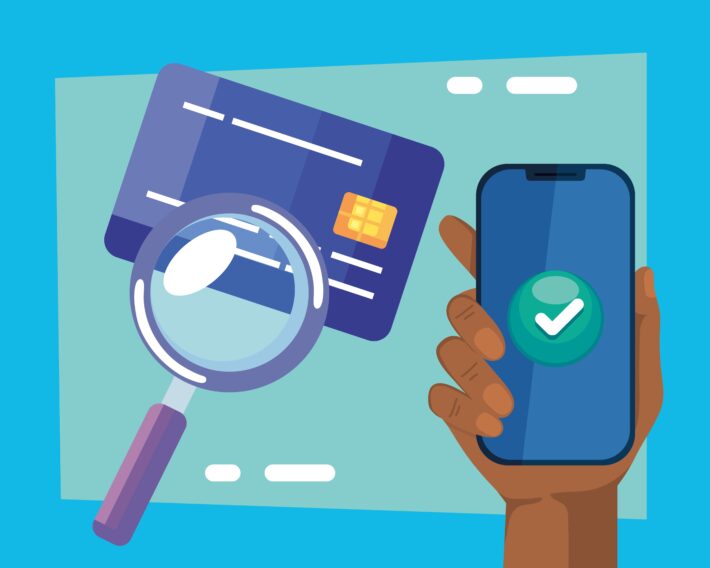How Identity Verification Can Prevent Fraudulent Activities
Identity verification has become increasingly crucial in today’s digital age, where cases of identity theft and fraudulent activities are on the rise. The importance of implementing identity verification measures, the consequences of neglecting them, identity verification to prevent fraud and how they can help prevent fraudulent activities will be explored. From verifying identity documents to incorporating biometric verification and real-time monitoring, various methods businesses can use to enhance security will be discussed.
The challenges of implementing identity verification and future trends in the field will be delved into.
For those interested in protecting their business from fraud, continue reading to learn more.
Why is Identity Verification Important?
Identity verification is essential for ensuring the security of online interactions and transactions. It aids in preventing fraud, protecting sensitive information, and enhancing customer safety. Robust identity verification measures enable businesses to detect fraudulent activities effectively and reduce risks.
By verifying personal information, utilizing biometric authentication, and implementing two-factor authentication, identity verification ensures that only authorized users access sensitive data or conduct transactions. This not only shields customers from potential financial harm but also fosters trust and credibility for businesses. Advancements in technology have led to more sophisticated identity verification methods, making it increasingly challenging for fraudsters to circumvent security protocols and carry out illicit activities.
What Are the Consequences of Not Implementing Identity Verification?
Failure to implement identity verification measures can have severe consequences, such as increased vulnerability to identity theft, higher risks of fraudulent activities, and susceptibility to cybercrime. Without proper identity verification protocols, businesses may encounter challenges in preventing fraud and detecting malicious activities effectively.
This negligence can bring detrimental impacts to both businesses and individuals by exposing sensitive personal information to potential misuse. Identity theft, a primary risk associated with relaxed identity verification, can lead to financial losses, reputational damage, and even legal troubles for the victims. The absence of robust identity verification measures creates loopholes that cybercriminals can exploit to execute sophisticated fraudulent schemes.
To mitigate these threats, organizations should prioritize the implementation of stringent fraud prevention strategies and advanced identity verification mechanisms.
How Can Identity Verification Prevent Fraudulent Activities?
Identity verification serves as a protective measure against fraudulent activities by verifying users’ identities, validating personal information, and ensuring secure transactions. By implementing a thorough authentication process, businesses can effectively prevent fraud and uphold the integrity of their online interactions.
By mandating users to verify their identities through methods like two-factor authentication, biometric recognition, or knowledge-based authentication questions, companies can enhance the security of their platforms. These security measures not only confirm the user’s identity but also aid in identifying suspicious behavior and potential fraud attempts.
Identity verification plays a crucial role in safeguarding sensitive information and facilitating secure transactions, which helps build trust between businesses and consumers.
1. Verifying Identity Documents
Verifying identity documents is an essential step in the identity verification process, ensuring the accuracy of personal information and facilitating secure online interactions. By proficiently validating identity documents, businesses can improve identity protection and reduce the risks associated with fraudulent activities.
This critical process involves inspecting various types of identity documents such as government-issued IDs, passports, and driver’s licenses to verify the individual’s identity. By employing advanced identity authentication and verification techniques like biometrics and document validation, organizations can establish a strong framework for confirming user identities. This not only fosters trust between businesses and customers but also protects sensitive information from unauthorized access.
Effective identity document verification is a key element of secure digital transactions and plays a significant role in combating identity theft and preventing unauthorized access.
2. Biometric Verification
Biometric verification uses distinct biological characteristics like fingerprints or facial recognition to verify identities, enhancing the security of the verification process. This technology not only confirms identities securely but also supports fraud investigation procedures by providing trustworthy and indisputable evidence.
Biometric data is instrumental in improving identity verification solutions by providing a highly precise method that is challenging to duplicate or counterfeit. Integrating biometric verification into fraud management systems helps businesses detect and prevent fraudulent activities more efficiently, thereby decreasing the risks linked to identity theft and unauthorized access.
3. Behavioral Analysis
Behavioral analysis involves the assessment of user behavior patterns to identify anomalies or suspicious activities that may indicate fraudulent behavior. Employing behavioral analysis techniques allows businesses to heighten fraud awareness, secure communication channels, and establish effective fraud prevention protocols.
This contemporary approach to identity verification serves as a proactive measure that surpasses traditional authentication methods such as passwords or security questions. By analyzing user interactions with systems, organizations can develop unique profiles for each individual, making it challenging for fraudsters to imitate legitimate users. This not only bolsters security measures but also enhances the overall customer experience by reducing false positives and offering seamless verification processes.
Behavioral analysis can identify subtle changes in user behavior over time, enabling early detection of potential threats and improving the overall security posture of businesses.
4. Real-time Monitoring
Real-time monitoring facilitates the continuous examination of user activities and transactions to pinpoint potential fraud as it happens. Implementing real-time monitoring mechanisms enables businesses to enhance fraud protection, deploy proactive fraud prevention solutions, and establish resilient fraud prevention systems.
This real-time monitoring capability enables organizations to identify suspicious patterns or anomalies in real-time, enabling them to promptly respond to potential threats and prevent fraudulent activities before they escalate. The immediate nature of real-time monitoring offers a proactive approach to combating fraud, ensuring that any unauthorized or fraudulent behavior is promptly identified and addressed. Integrating real-time monitoring into identity verification processes aids in real-time risk assessment and mitigation, strengthening overall security measures against various forms of fraud.
What Are the Challenges of Implementing Identity Verification?
Implementing identity verification presents various challenges, including balancing security measures with user experience and staying ahead of evolving fraud tactics. Businesses must navigate the complexities of risk management, adopt protective measures, and conduct thorough fraud risk assessments to maintain a secure environment.
One significant difficulty in implementing identity verification solutions is the need to strike a delicate balance between robust security protocols and a frictionless user journey. This challenge often arises as stringent security measures may lead to increased user drop-off rates due to lengthy verification processes. The constantly evolving landscape of fraud tactics demands continuous vigilance and adaptability in safeguarding sensitive information. By integrating advanced risk management strategies and leveraging comprehensive fraud risk assessments, organizations can mitigate potential threats and enhance their overall security posture.
1. Balancing Security and User Experience
One of the challenges in implementing identity verification involves balancing stringent security measures with providing a seamless user experience. Businesses must prioritize secure access, data privacy, online platform security, and secure payment processing while also offering a user-friendly verification process.
Achieving this balance necessitates a comprehensive approach. By incorporating strong encryption techniques and multi-factor authentication methods, secure access can be maintained without compromising user convenience. Additionally, implementing thorough data privacy protocols like end-to-end encryption and regular security audits can help enhance user trust.
To ensure a user-friendly platform, businesses can utilize intuitive interfaces, streamlined workflows, and seamless integrations to facilitate smoother verification processes. By focusing on both security and user experience, businesses can establish secure platforms that foster confidence and loyalty among users.
2. Keeping Up with Evolving Fraud Tactics
Another major challenge in implementing identity verification is keeping up to date with the evolving fraud tactics and strategies. Businesses need to consistently update their fraud investigation methods, improve fraud prevention strategies, implement effective fraud mitigation techniques, and secure communication channels to address emerging threats.
Regularly reviewing and analyzing data patterns can help organizations identify potential fraudulent activities at an early stage. Incorporating multi-factor authentication, biometric verification, and AI-powered fraud detection tools can enhance the verification process. It is essential to educate employees and customers on how to recognize and report suspicious behavior to prevent fraud attempts. Encrypting sensitive data and integrating blockchain technology can boost the security of communication channels, making it more difficult for fraudsters to intercept or manipulate information.
How Can Businesses Implement Identity Verification?
Businesses have the option of implementing identity verification through various methods. These include collaborating with reputable identity verification service providers, developing in-house solutions, and utilizing multiple verification methods. This approach aims to ensure secure online interactions and establish a robust identity validation process.
The use of a combination of verification approaches allows businesses to create a comprehensive system. This system not only verifies the identity of customers but also protects sensitive data. Additionally, partnering with identity verification service providers can provide specialized expertise and advanced technologies for accurate and efficient validation. On the other hand, developing in-house solutions offers customization and control over the verification process, which can be tailored to specific business needs. Integrating multiple verification methods such as biometrics, document checks, and two-factor authentication adds layers of security, helping to prevent fraudulent activities and enhance customer trust in online transactions.
1. Partnering with Identity Verification Service Providers
Collaboration with identity verification service providers provides businesses with access to secure online platforms, industry-standard verification methods, robust fraud prevention protocols, and continuous fraud monitoring. Partnering with trusted service providers allows businesses to improve their identity verification processes and enhance fraud prevention measures.
This partnership ensures that businesses can efficiently verify customer identities securely, reducing the risk of unauthorized access and fraudulent activities. Identity verification service providers make use of advanced algorithms and data analytics to accurately validate user information. Additionally, by implementing rigorous verification standards, businesses can have confidence in the genuineness of customer identities, protecting sensitive information and ensuring compliance with regulations. Real-time fraud monitoring alerts businesses to suspicious activities promptly, enabling them to respond immediately and mitigate potential financial losses.
2. Using In-house Solutions
Creating in-house identity verification solutions enables businesses to establish secure processes for user verification, ensure strong data protection, and set up secure identity management practices. Additionally, by utilizing internal resources, businesses can tailor their identity verification processes to align with specific security needs.
Introducing in-house solutions enables organizations to strengthen user authentication with multi-factor verification methods, decreasing the chances of unauthorized access. Internal identity verification systems offer greater control over sensitive data, reducing the risk of breaches or leaks. This approach also helps businesses adhere to industry regulations by integrating customized security measures to effectively protect customer information.
3. Incorporating Multiple Verification Methods
Incorporating multiple verification methods into the identity verification process allows businesses to implement comprehensive identity verification solutions, improve fraud prevention measures, facilitate secure digital transactions, and conduct thorough fraud risk assessments. By utilizing diverse verification approaches, businesses can enhance their overall security stance.
The integration of various verification techniques like biometric scans, document verification, and knowledge-based authentication provides layered protection against possible fraud attempts. The combination of these methods not only strengthens the security framework but also increases user trust in the integrity of digital transactions.
Hence, using a variety of verification methods assists in more precise risk assessments, enabling businesses to identify suspicious activities more efficiently and mitigate potential fraud risks before they become critical. This proactive strategy aids in protecting both the business and its customers from cyber threats and financial harm.
What Are the Future Trends in Identity Verification?
The future of identity verification is expected to incorporate advanced technologies like artificial intelligence, blockchain, and biometric authentication on mobile devices. These advancements are set to transform fraud prevention solutions, improve identity verification processes, and establish secure methods for validating identities.
Additionally, by incorporating artificial intelligence into identity verification procedures, organizations can utilize machine learning to quickly analyze patterns, behaviors, and anomalies to identify fraudulent activities.
Blockchain technology introduces a decentralized and tamper-proof approach to storing and verifying identity information, thereby reducing the likelihood of data breaches and identity theft.
Mobile biometric authentication, including fingerprint and facial recognition, provides users with a convenient and secure way to verify their identities, adding an additional layer of protection against fraudsters.
1. Increased Use of Artificial Intelligence
The increased utilization of artificial intelligence in identity verification is set to transform fraud prevention techniques, enhance identity verification tools, establish strong verification measures, and optimize fraud prevention checks. AI-driven solutions provide scalability, accuracy, and efficiency in combating fraudulent activities.
Additionally, by utilizing AI, organizations can analyze large volumes of data in real-time to identify suspicious patterns and anomalies that may signal fraudulent behavior. Machine learning algorithms can adjust and enhance themselves over time, improving the effectiveness of the fraud detection process.
AI has the capability to automate identity verification procedures, reducing manual errors and speeding up the verification of legitimate users. This incorporation of AI technology reinforces security measures and enhances overall trust in online transactions.
2. Adoption of Blockchain Technology
The implementation of blockchain technology in identity verification is expected to bring about secure and transparent verification methods, improve fraud prevention techniques, meet strict identity verification requirements, and promote secure authentication methods. The decentralized and immutable characteristics of blockchain provide a high level of security for identity verification processes.
Through the use of blockchain, users can enjoy a trustless system that eliminates the need for traditional intermediaries, reducing the risk of data breaches and identity theft. Additionally, the encryption and consensus mechanisms inherent in blockchain technology ensure the confidentiality and integrity of personal information. The decentralized structure of blockchain eliminates any single point of failure, increasing the resilience of verification systems against cyber threats. This transformation makes identity verification more efficient, reliable, and secure for both individuals and organizations.
3. Biometric Authentication on Mobile Devices
The integration of biometric authentication on mobile devices is expected to bring significant changes to identity verification processes. This technology offers secure identity verification solutions, advanced verification tools, increased verification security, and convenient verification methods. By utilizing unique biological characteristics such as fingerprints, facial features, or iris scans, biometric solutions ensure a high level of accuracy and reliability in verifying an individual’s identity. Also, these features make it extremely difficult for unauthorized users to gain access, thereby reducing instances of fraud and identity theft. Biometric authentication enhances user experience by eliminating the need to remember complex passwords or carry physical identification documents. As technology progresses, biometric authentication continues to evolve to stay ahead of potential security threats and improve overall mobile security protocols.
Frequently Asked Questions
How does identity verification prevent fraudulent activities?
Identity verification helps prevent fraudulent activities by verifying the true identity of individuals before granting access to sensitive information or transactions. Hence, this ensures that only authorized individuals have access, making it more difficult for fraudsters to gain access.
What methods are used in identity verification to prevent fraudulent activities?
There are several methods used in identity verification, such as document verification, biometric verification, and knowledge-based authentication. Additionally, these methods help confirm the identity of an individual and make it harder for fraudsters to impersonate someone else.
Why is identity verification important in preventing fraudulent activities?
Identity verification is important in preventing fraudulent activities because it adds an extra layer of security to sensitive information and transactions. Also, It helps ensure that the person attempting to access or make a transaction is who they claim to be, reducing the risk of fraud.
Can identity verification completely eliminate fraudulent activities?
No, identity verification cannot completely eliminate fraudulent activities. It can significantly reduce the risk of fraud, but there is always a possibility that fraudsters can find ways to bypass the verification process. Also, it is important to continuously update and improve verification methods to stay ahead of potential fraudsters.
How can businesses benefit from implementing identity verification to prevent fraudulent activities?
Implementing identity verification can benefit businesses in several ways. It can protect their customers’ sensitive information, reduce the risk of fraud and financial losses, and maintain the integrity of their operations. Also, It can help build trust with customers who know their information is being kept secure.
What are some industries that can benefit from using identity verification to prevent fraudulent activities?
Industries that deal with sensitive information or transactions, such as banking, healthcare, and e-commerce, can greatly benefit from using identity verification to prevent fraudulent activities. Additionally, any industry that deals with personal information or financial transactions can benefit from implementing strong identity verification measures.



